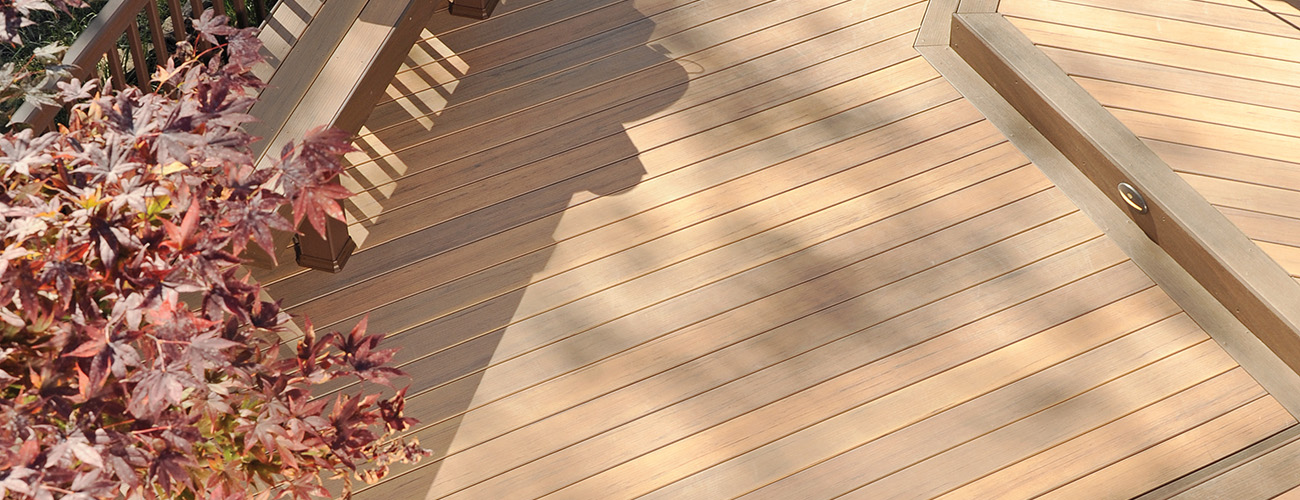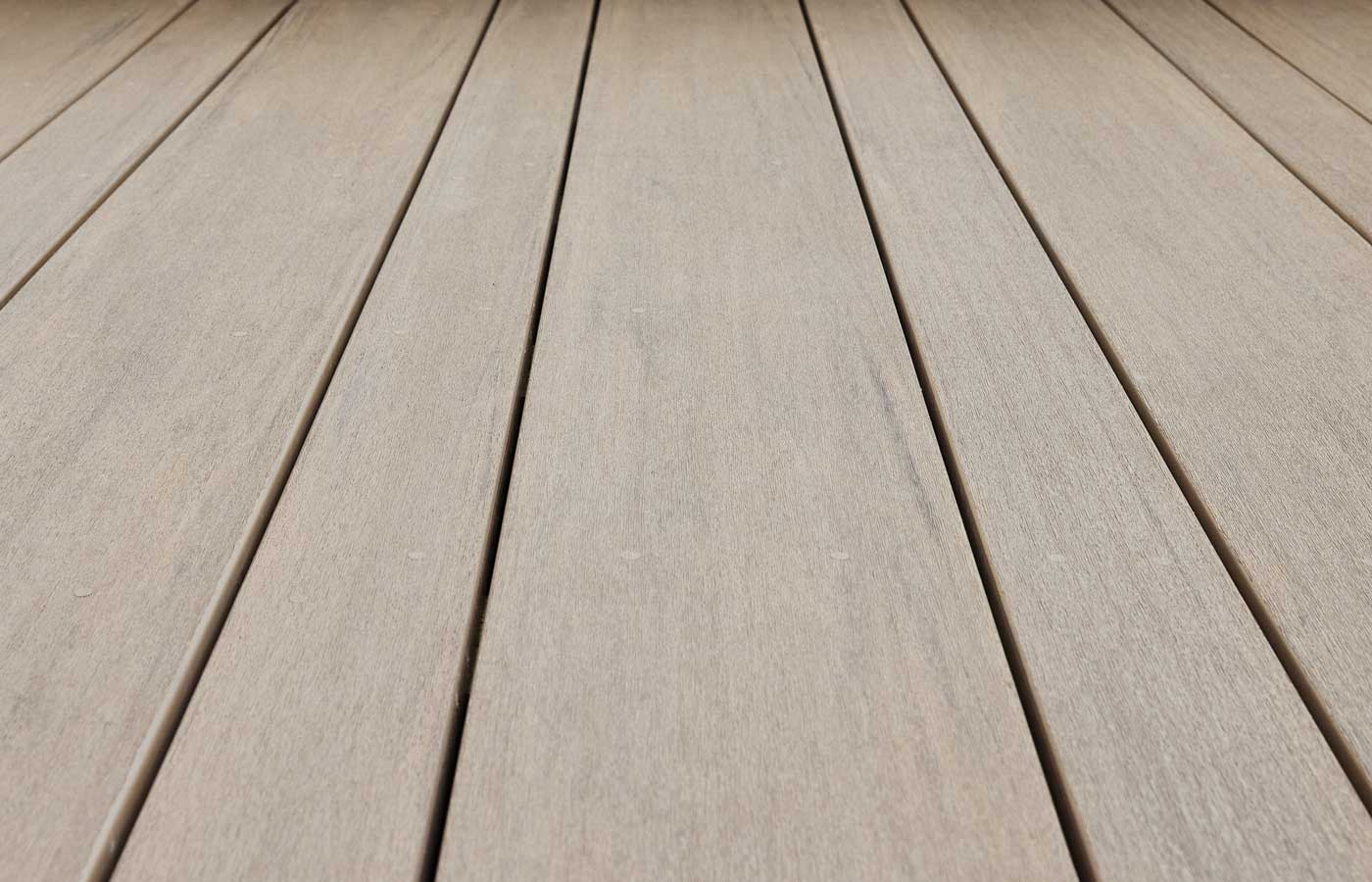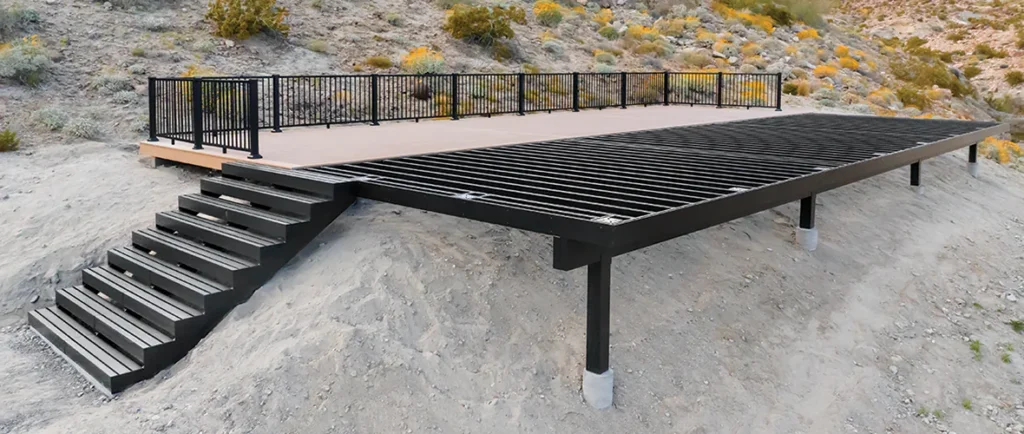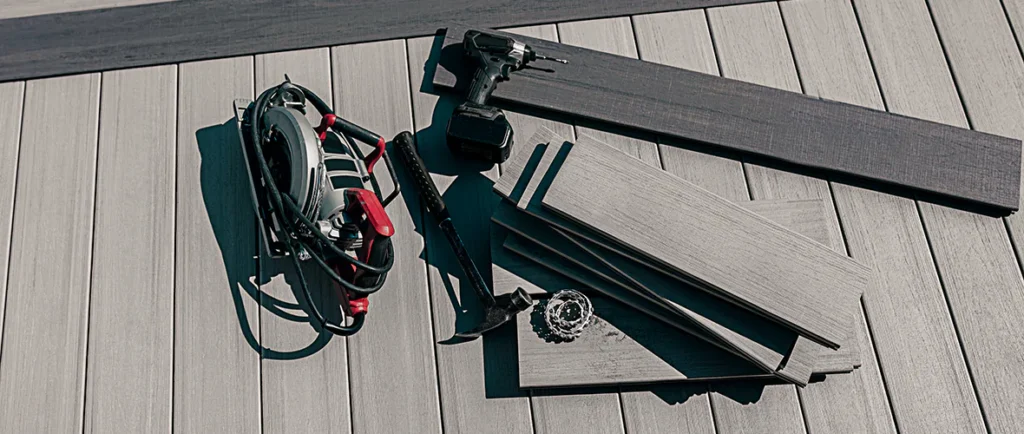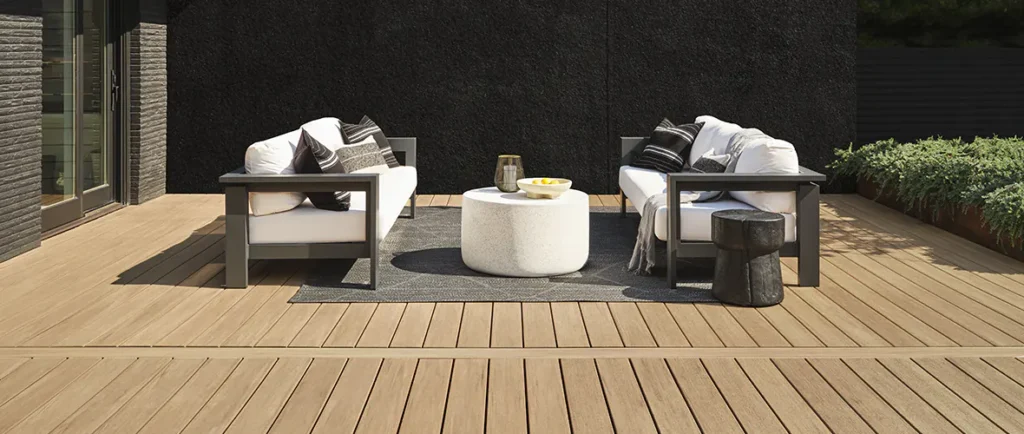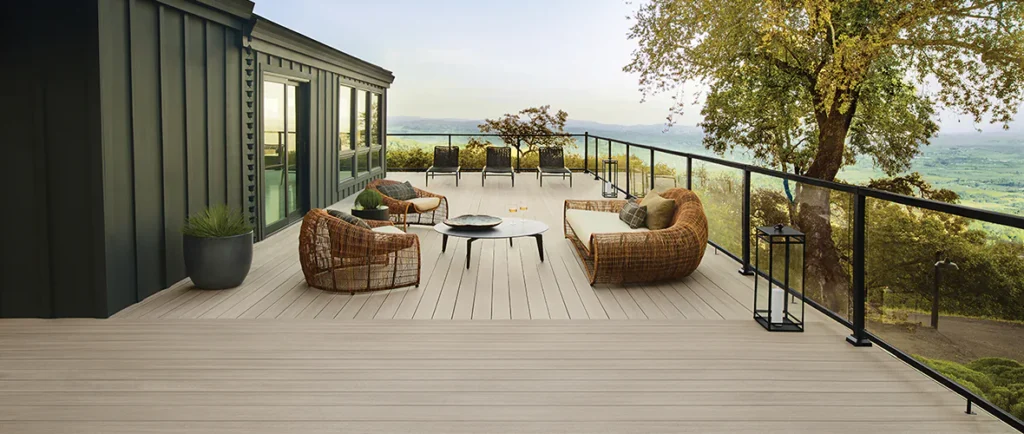Winter maintenance is important for all deck owners to sustain their outdoor living space and its appearance, but removing ice and snow from decking is especially important for wood decks. Otherwise, the moisture can cause severe wood deck rot and damage.
Homeowners who live in harsh winter climates should know how to properly clear snow from their deck, and maintenance for wood and composite or PVC decks varies.
Even if you live in a warm climate, it’s still a good idea to inspect your deck in the winter to see if it is due for a cleaning and to ensure it’s structurally sound.
Learn more about deck snow removal and advice for your decking below.
In This Article:
Composite decking snow removal
Cleaning synthetic decks in winter is relatively simple, but guidelines vary between decking products. Always follow your decking manufacturer’s care guidelines.
Here are the winter cleaning steps if you own TimberTech Composite or Advanced PVC Decking:
- Remove any patio furniture, appliances, or decor that can’t withstand cold weather and moisture.
- Clear away accumulated debris, including leaves, sticks, etc.
- Using only a plastic shovel, remove snow accumulation periodically. A metal shovel can damage your deck.
- Remove ice with a calcium chloride product (not rock salt), which is safe to use on your capped polymer or capped composite deck.
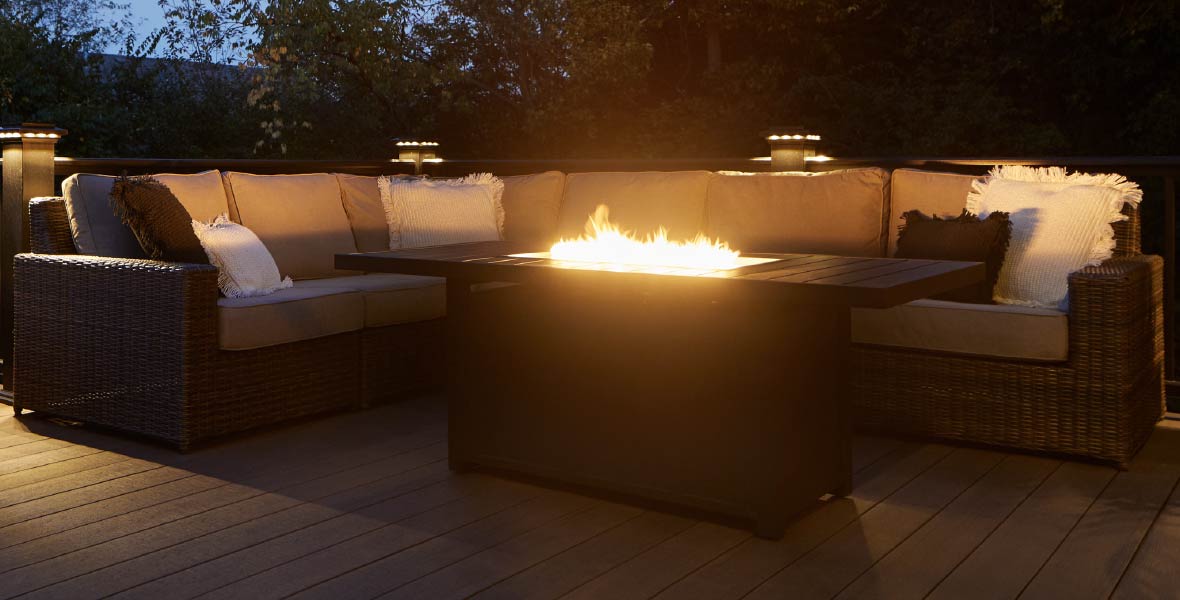
We recommend removing all of the snow from your deck to maintain its function and appearance, but it’s not required. The moisture and weight won’t damage a properly installed TimberTech deck.
Winter care for wood decks
Moisture from snow and ice affects wood deck boards in several ways:
- Buckling, warping, and cracking: Structural issues caused by expansion and contraction of the boards due to moisture presence.
- Mold and mildew: These thrive in moisture and are more prevalent when the snow melts.
- Rot growth: Rot is a fungus that can survive in below-freezing temperatures.
Wood decking is more susceptible to moisture damage and requires more maintenance than modern decking alternatives. Preparation and maintenance are essential to reduce potential damage to your wood deck as much as possible.
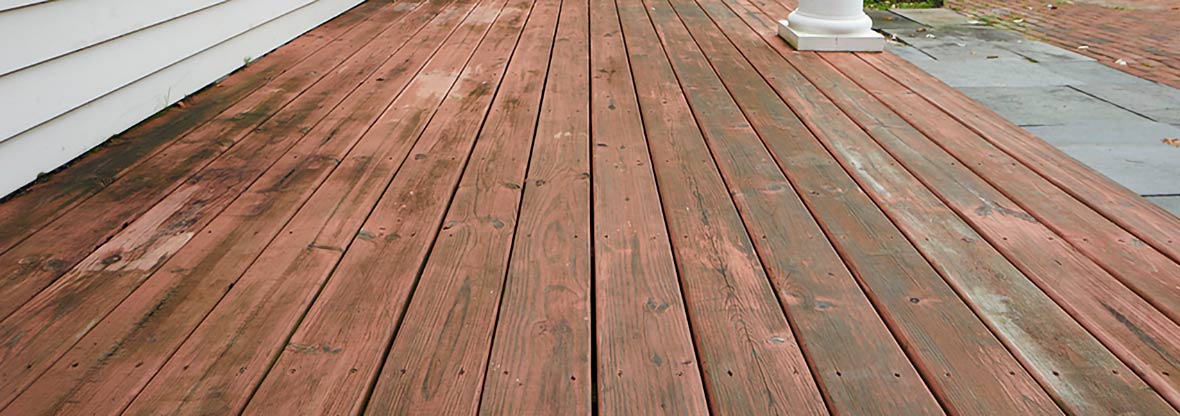
Wood deck winter preparation:
- Remove any mold and mildew with chemical cleaners.
- Use a power washer or hose to rinse the deck thoroughly.
- Dry for 24 to 48 hours.
- Stain and seal your decking (be aware that stains and seals often release volatile organic compounds, or VOCs, and other harmful chemicals into the air, so use with care).
How to clean wood decking in winter:
- Clear away accumulated debris, including leaves, sticks, etc.
- Remove fallen snow regularly to relieve pressure on your deck boards and minimize moisture presence.
- Remove ice, but do not use rock salt on your premium hardwood or pressure-treated wood deck, as it can affect the moisture level in the wood and cause erosion to happen faster.
Skipping these steps can increase moisture damage and cause serious structural and aesthetic issues.
Winter deck maintenance best practices
While wood decks require more maintenance and prevention, a lot of best practices apply to all decking materials. If you still have treatment questions about your deck this winter, explore these recommendations below.
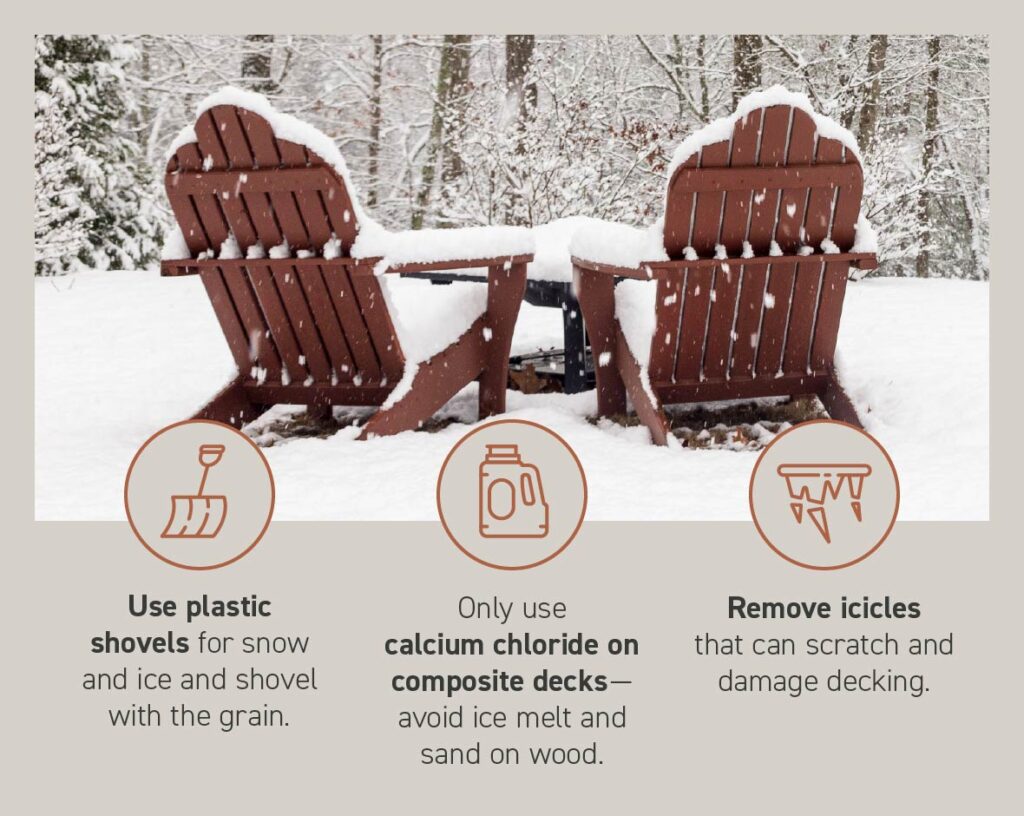
Use a plastic snow shovel for decking
Metal can damage both composite and wood decking, so you should never use a metal shovel to clear deck snow. Plastic shovels are ideal. You can also opt for a shovel with a protective rubber blade to avoid scratching your deck.
If the snow is fresh and powdery, you may use a brush or leaf blower instead. This guarantees you won’t damage your deck by scraping.
Be mindful of ice melt on decks
There are several types of ice melts on the market, but you shouldn’t use most of them on your deck.
You can use calcium chloride for composite decks, including TimberTech.
Don’t use rock salts, or sodium chloride, on any deck — including wood. DIY ice melt made of two parts vinegar, one part water, and a little dish soap is best for wood decking.
Don’t use sand on decking either, as it’s coarse and can damage your boards.
Remove hanging ice
Icicles on your gutters, power lines, and railing can break off and shatter on your deck. This sharp ice can scratch or damage your decking. It’s also a safety hazard for you and your family, so it’s best to remove hanging ice as you notice it.
Best decking for snow and ice
Prevention is the best first step for your deck’s winter well-being, so if you don’t already have a deck or are considering resurfacing one, it’s wise to think through all of your material choices.
Composite and PVC decking are ideal for weathering the seasons and water exposure in general.
TimberTech Advanced PVC and Composite Decking are resistant to water damage and rot. Our Composite Decking features a protective polymer cap to prevent water penetration, and our Advanced PVC Decking cap and core consists entirely of polymers and/or recycled materials that aren’t susceptible to moisture damage.
Wood decking is naturally more susceptible to moisture damage from heavy snow and ice accumulation, so it may not be the right choice for winter weather. However, proper annual maintenance with stain or paint and/or sealer protects your wood deck from the worst winter weather.
See and feel the difference for yourself
Proper maintenance and prevention can protect any deck from the harsh weather of winter, but upgrading to composite or PVC materials is best if you expect large or frequent snowfall on your deck. These materials are less susceptible to water damage with significantly fewer maintenance requirements than wood.
Want to see the difference for yourself? Order free decking samples to compare the real wood look, gorgeous grains, and color options available and decide if you’re ready to swap from wood.
